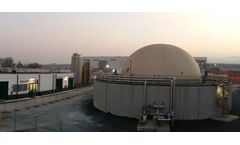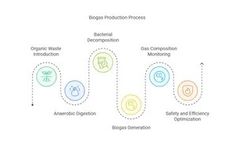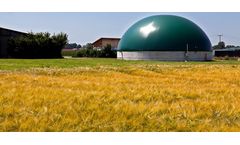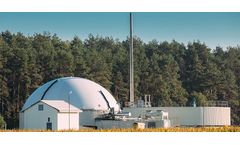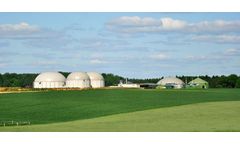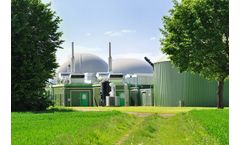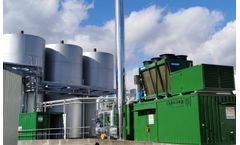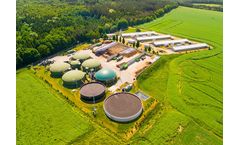Refine by
Anaerobic Digestion Processes Articles & Analysis
89 articles found
Critical considerations for anaerobic digestion projects In the field of industrial wastewater treatment, anaerobic digestion is a powerful process that transforms waste into valuable by-products. ...
Wastewater treatment plants, food waste facilities, and landfill gas recovery systems utilise anaerobic digesters to break down organic matter. This digestion process produces biogas—a mixture of methane and carbon dioxide. ...
The annual processing capacity of the plant is approximately 130,000 tons of agricultural biomass, including corn and straw. The biogas generated will be used as a substitute for natural gas for transportation and injected into the natural gas pipeline network. ...
There is enormous potential to increase the extraction of energy from farm waste Agricultural waste is one of the largest sources of methane emitted into the atmosphere from human activities. Methane is a potent greenhouse gas but it’s also highly combustible, making it a valuable source of renewable energy when captured. Anaerobic digesters can convert farm waste into methane-rich ...
Legislation has potential to boost biogas use across the US When anaerobic digestion is used to process wastewater with a high organic load, it produces energy in the form of biogas, a combination of methane, carbon dioxide, and other gases. In the United States, there is huge potential for expansion in anaerobic ...
It prevents methane, a potent greenhouse gas, from escaping into the atmosphere. Digestate, the wet material left over from the digestion process, can be processed for use as a natural fertilizer to replace carbon-rich chemical fertilizers. This fertilizer is more eco-friendly than undigested cattle slurry because weed seeds, ...
The good news is that it can, through anaerobic digestion. In anaerobic digestion, organic waste is broken down by specialized bacteria in an oxygen-free environment. ...
Biogas, a methane-rich mix of gases created by anaerobic digestion, can be burned to generate electricity or heat, or it can be processed further to produce a valuable source of renewable energy. Different technologies can be used to tailor a solution that makes the most of specific feedstocks Anaerobic ...
This could be considered a drawback, but fortunately there are processes that not only provide wastewater treatment, but also capture the latent energy held in the wastewater. Anaerobic digestion treats the high-load wastewater streams, which helps to protect the environment, while lowering utility bills and generating biogas – a renewable ...
Anaerobic digestion is a biological process in which microorganisms break down organic matter without oxygen and transform them into end-products, including biogas, an energy-rich gas comprised of methane (CH4), carbon dioxide (CO2), and other trace amounts of gases. Anaerobic digestion can be summarized as a ...
With an underdeveloped waste-to-energy market, new legislation promotes greater adoption of anaerobic digestion On August 16, United States President Biden signed the $750 billion Inflation Reduction Act (IRA) into law and biogas industry groups immediately hailed its hefty incentives for anaerobic digestion, a technology that recovers energy from waste in the form of ...
Each year, the anaerobic digestion process will reduce greenhouse gas (GHG) emissions, equivalent to taking nearly 19,000 gasoline-powered cars off the road annually. ...
Instead of discharging waste byproducts into the environment, where the high nutrient load can cause problems including mass die-offs of aquatic life, waste streams are sent to an anaerobic digester and converted to biogas, a valuable source of clean, renewable energy. ...
The anaerobic digestion process is typically used as a means of waste disposal or energy production. ...
Since 1970, Revico and its subsidiary Revico Energies Vertes have been utilising the by-products of the Cognac sector. Located in Saint-Laurent-de-Cognac (Charente), the company specialises in the treatment of effluents from the production of spirits, such as vinasses or wine dregs. ...
In this process, microorganisms decompose biomass in the absence of oxygen. Through anaerobic digestion, food and animal waste is recycled to produce hydrogen gas that can be subsequently converted to methane or biogas if needed.1,2,3 The Science Behind Anaerobic Digestion Anaerobic ...
The flow chart in Figure 1 shows a typical WWTP sludge treatment facility via anaerobic digestion, using biogas to meet the energy needs of the process itself and selling surplus energy to the grid. ...
In the case of WWTPs, it is also necessary to add particles, sediments, condensates and typical foams in biogas from anaerobic digesters to the impurities or contaminants that biogas has. In general terms, a biogas installation in a WWTP has the following stages: Production/generation of biogas. Anaerobic sludge digestion ...
Its composition is intimately related to the type of matter that is subjected to the anaerobic digestion process, and a certain extent, to the technology used for its production. ...
Removal of water vapor Origin In the biogas production process, water is an intrinsic part of both the material to be digested (biomass) and the process itself. Furthermore, water is the medium in which biogas production takes place, regardless of whether the digestion process is dry or wet, the biogas ...

